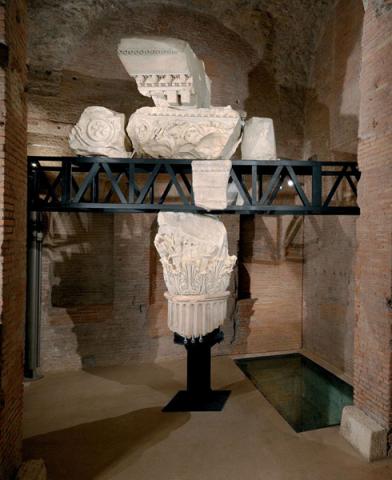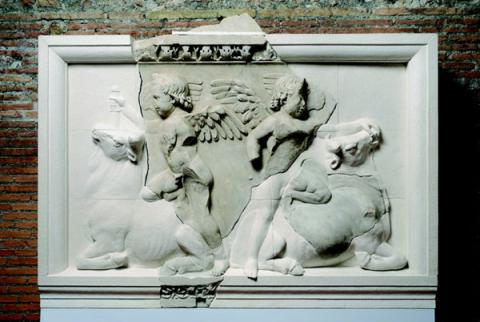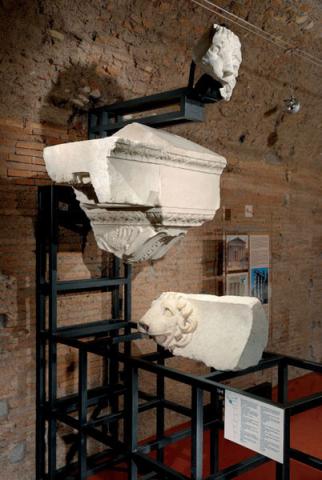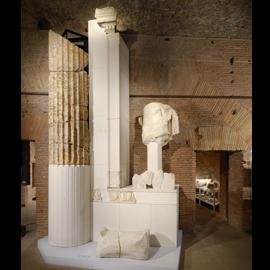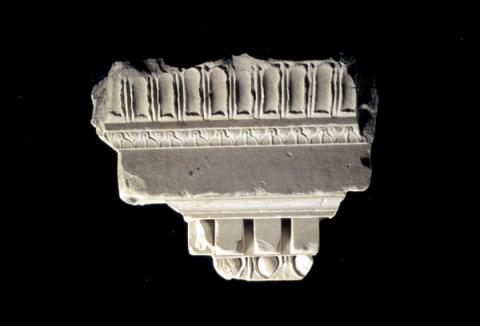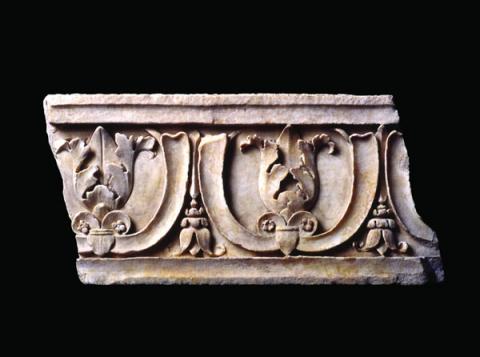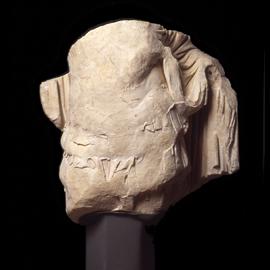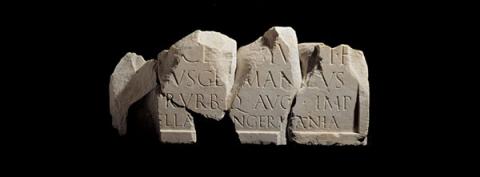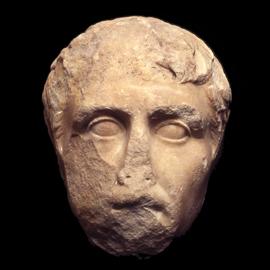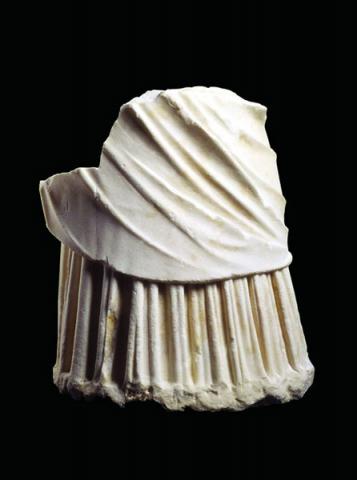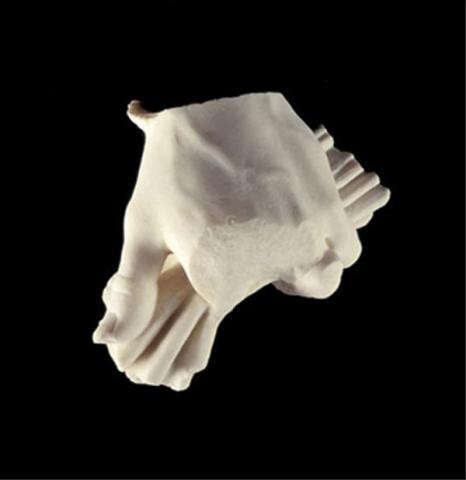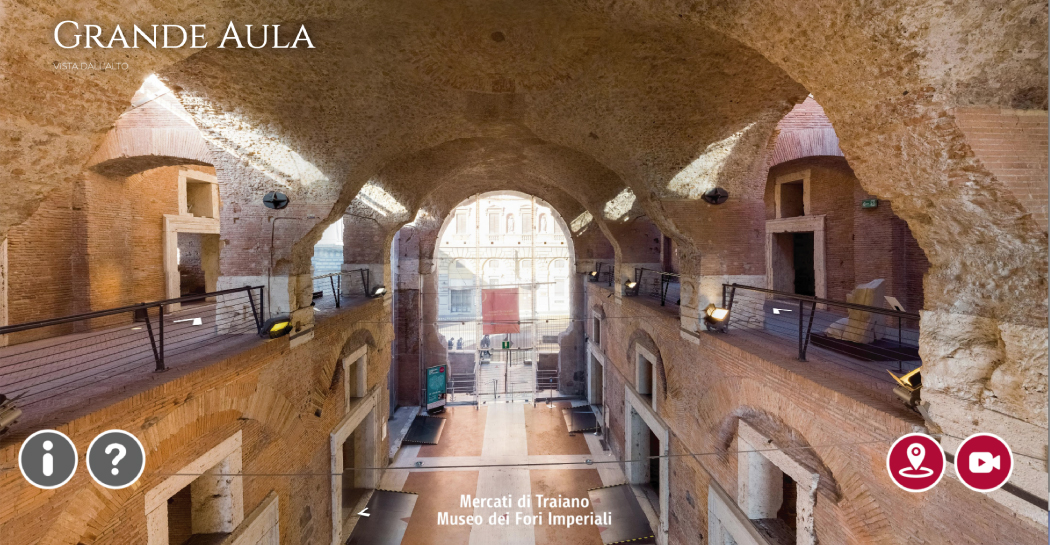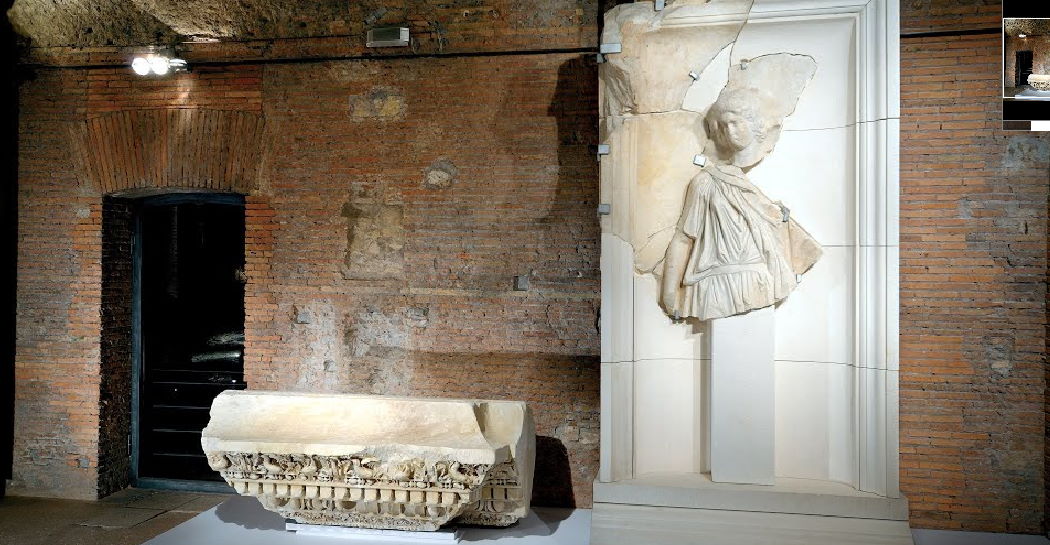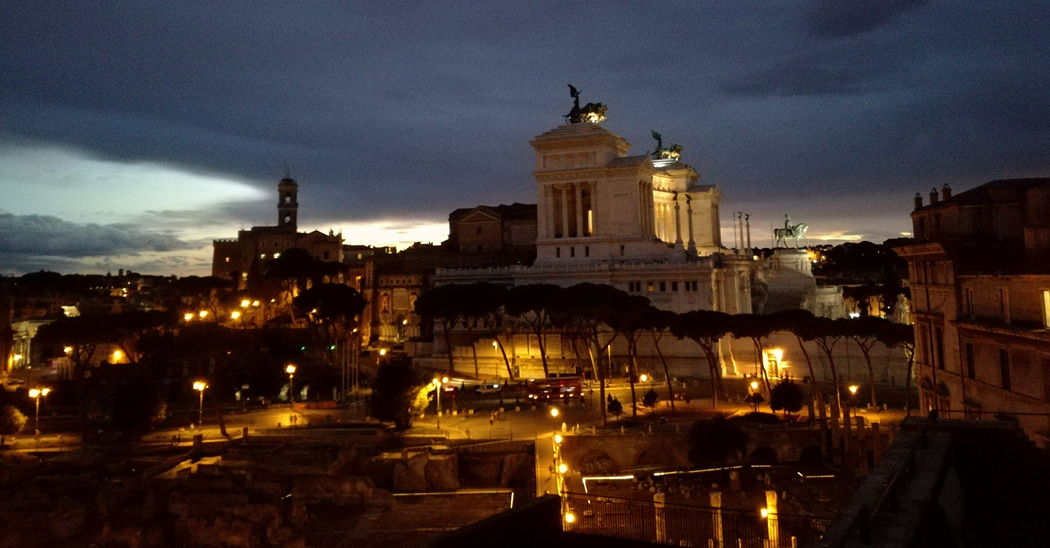Porticoes and Exedras
Moving along to the rooms in the central body of the museum, we come to the section dedicated to the porticoes of the Forum and a reconstruction of part of the architectural order from the façade overlooking the square is on display. The reconstructed piece is suspended from a metal trellis which makes it easier to fully appreciate the overall effect of the architectural concept which comprises the echinus in antique yellow marble and the capital of one of the two columns, all capped by the component elements of the trabeation (beams), architrave (moulds), frieze and cornice, all decorated on both sides.
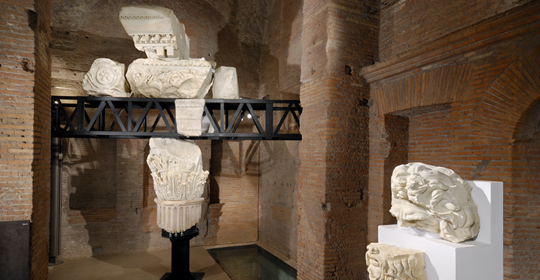
The display in front of this reconstruction is made up of single, priceless and elegant pieces of sculptures used to decorate the attic – a reconstruction of which can be found on the ground floor. It provides an opportunity to appreciate and admire the outstanding quality of the workmanship that went into sculpting the heads of the male deities and female figures and just how different they all were. In some cases in fact, the heads were inspired by the image of Jupiter Hammon, represented by the inclusion of bull horns, although the heads on display here have torques, not horns, traditional Celtic and Asian necklaces that were very much in vogue at the time. All the heads known about today, whether in Rome or elsewhere, would seem to suggest that Augustus must have summoned craftsmen from Rhodes, the island off the SW tip of Asia Minor, and established workshops for them in Rome during the period in which the Forum was being built. The signature found on a piece from one of the Caryatids tells us that these figures were essentially copies of the famous originals located in the Erectheion on the Acropolis in Athens, but slightly altered to reflect the different symbolic significance more pertinent to this location.The imposing architecture of the walkway between the porticoes and the exedra, effectively screens the inner area of the exedra, probably because admittance to the exedra, when meetings and audiences were taking place, was controlled. Statues of Augustus' ancestors and men who had contributed to the greatness of Rome adorned the niches. The reconstruction of the niche that can be seen in the museum is one from the portico, as can be seen by the fact that the semi-column in antique yellow, which is almost intact, bears the same decorative elements as the exedra.
Foro di Augusto, Portici ed Esedre
Foro di Augusto, Attico dei Portici
Foro di Augusto, Facciata e Attico dei Portici



























